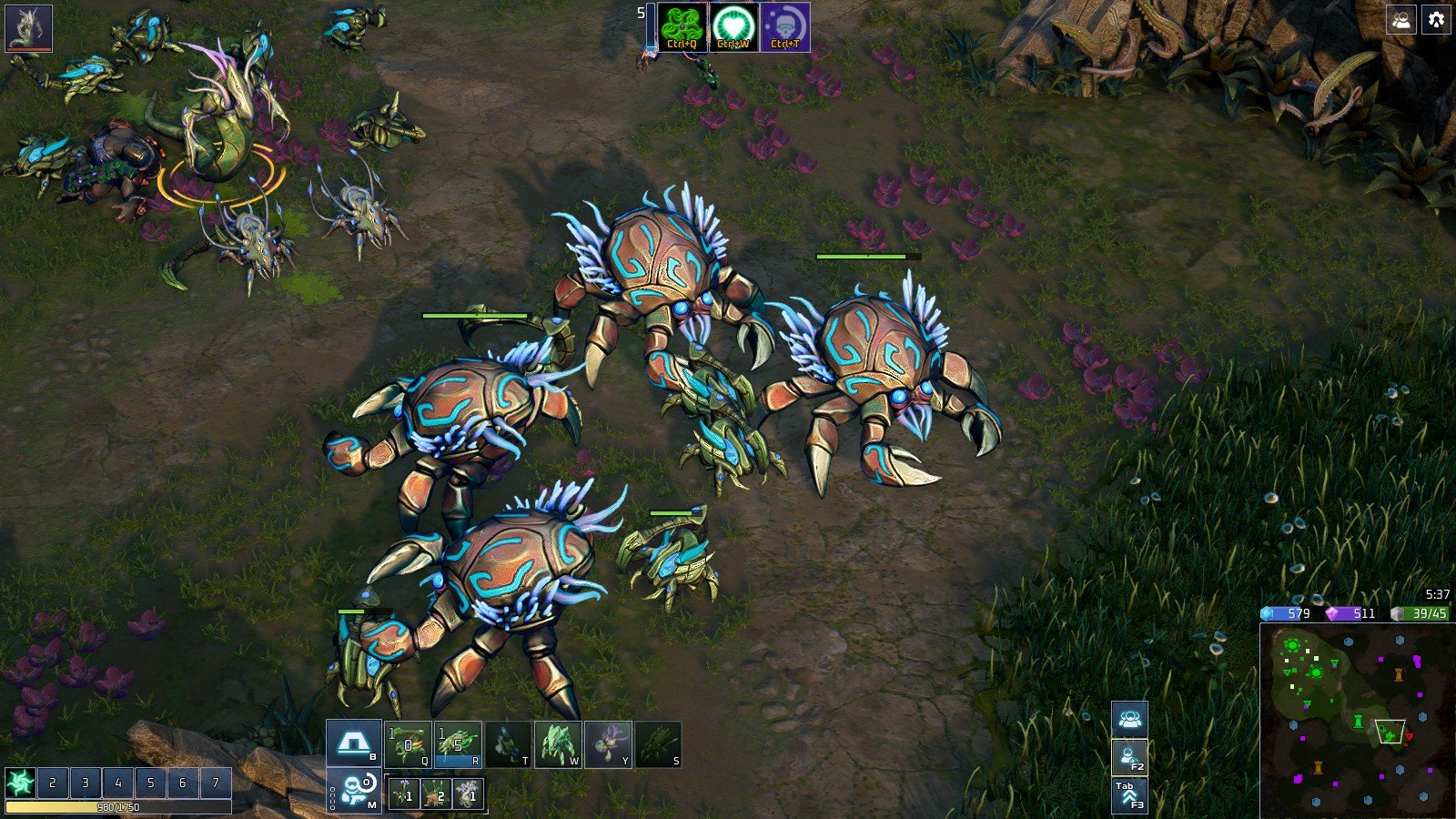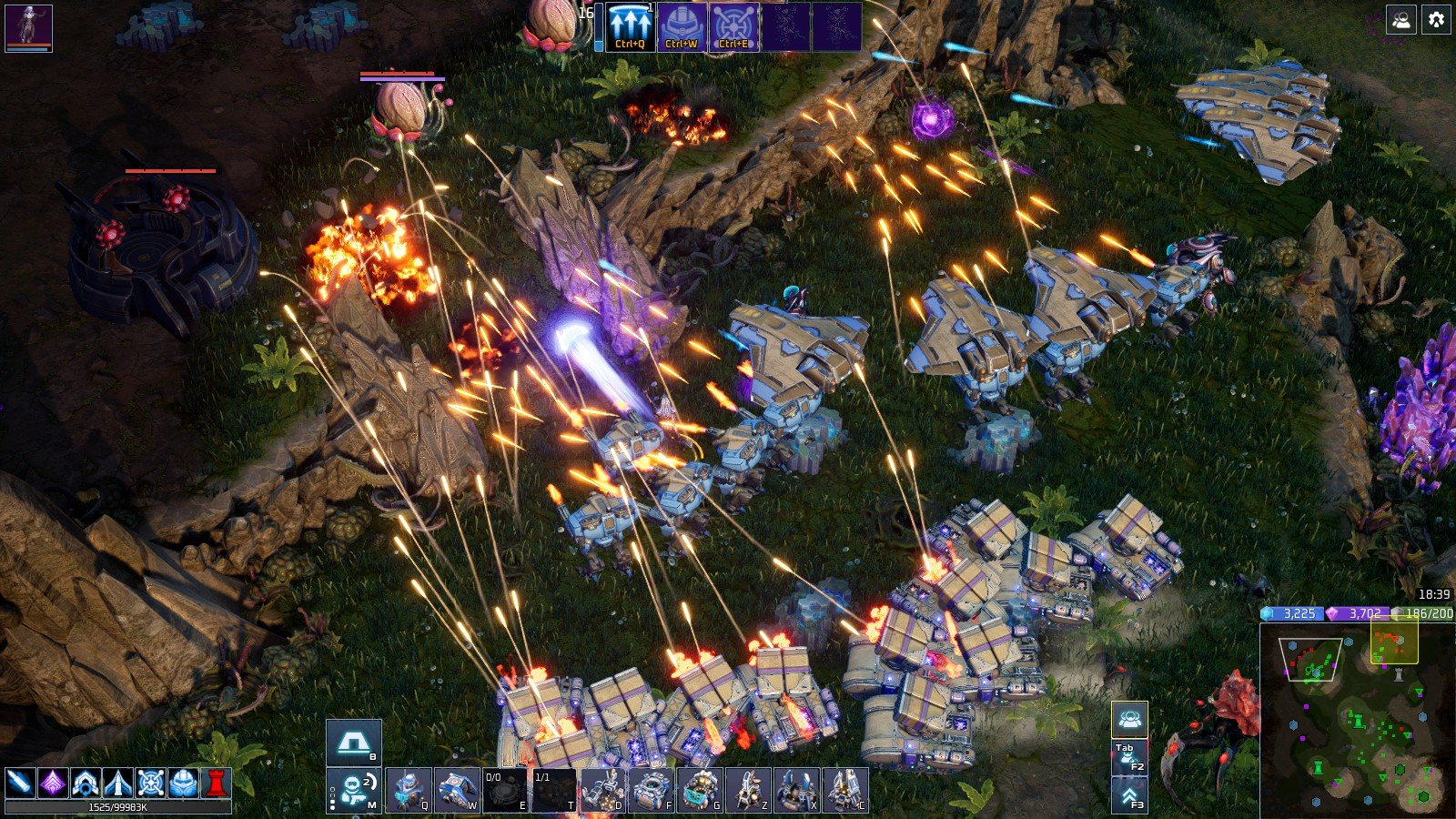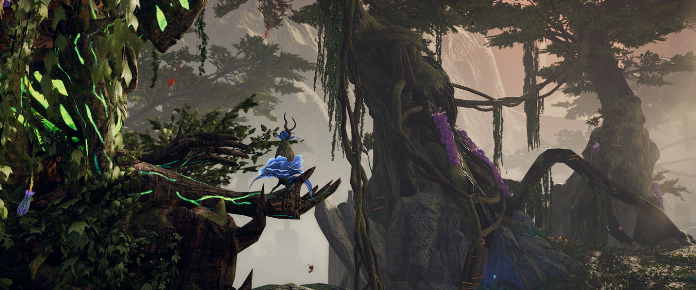
With Stormgate struggling off the bat and Immortal: Gates of Pyre turning to the blockchain dark side, ZeroSpace is looking like the last, best hope for a StarCraft II spiritual successor, and after much anticipation, I finally got to try it during its recent open beta weekend. It proved to be a game with a lot of good ideas – but also one that still needs a lot of work before it’s ready for launch.
My biggest worry going in to ZeroSpace was that it looked overly complicated, and that did turn out to be a valid concern. In fact, it’s so complex that it’s going to take me three full columns just to cover all its numerous features and systems.
We’ll start with the issue of complexity. Even as a writer, I’ve found it a serious struggle to figure out how to explain all this game’s myriad systems in a coherent manner. In the nearly fifteen years I’ve been doing paid games writing, I can’t recall having this problem before.
We’ll start with competitive play. Given that ZeroSpace‘s contemporary Immortal: Gates of Pyre was able to get me enjoying RTS PvP in a way I never had before, I decided to see if ZeroSpace could do the same, and the answer is… no.
ZeroSpace has a slightly lower time to kill and less emphasis on economic harassment than StarCraft II, but it adds so many layers of additional complexity that it manages to be just as stressful anyway. Let’s try and get through them all.
First, ZeroSpace incorporates hero units, but these are not the powerhouses they were in Warcraft III. They’re important in the early game, but they don’t scale, so later on they function more as non-essential support units.

There’s also an in-match leveling system. You (passively?) earn experience over time, but you can get additional XP by capturing towers in the middle of the map. Contesting these early is the main purpose of heroes. Each time you level up, you get to choose one of two talents to improve your faction. These can be anything from buffs to specific units to new top bar abilities.
Oh yeah, you have top bar abilities, too. These are unique per faction and powered by a dedicated energy pool that accumulates slowly over time. I enjoyed these a lot. They’re usually not game-changing, but they’re useful and add another venue for tactical play.
In addition to talents, there are also conventional upgrades for your units, the kind you spend resources on. There’s no basic armour or weapon upgrades here. Every upgrade is a bespoke bonus to a specific unit, like faster attack speed or new active abilities, and units can have as many as four possible upgrades. These upgrades have to be researched in order, and some are mutually exclusive with each other, but the UI doesn’t do a good job of communicating these things.
Of all ZeroSpace‘s many mechanics, the unit upgrades are the ones I liked the least. They add a massive amount of additional complexity and decision-making to a game that was already overflowing with them. They especially feel redundant when the talent system already serves a similar purpose. I think unit upgrades should be drastically reduced in number or perhaps even eliminated entirely, with the cooler ones either made baseline or incorporated into the talent system.
But wait! There’s more! In addition to the three primary playable factions currently available (a fourth is planned), there are also five mercenary factions (again, more or planned). At the start of a match, you choose a mercenary faction along with your primary faction. Each merc faction adds an additional half a dozen or so units along with additional top bar abilities and talent options.
I liked the new talents and top bar abilities added by mercs. They felt like a fun way to customize the playstyle of your existing faction. The mercenary units, though, I’m less sold on.

This is not because the units themselves are bad. Quite the opposite, in fact. Many of them have better aesthetics and felt more fun to use than the units from the core factions. But they don’t feel like they integrate well with the rest of the game.
The primary factions already have pretty complete and well-rounded toolkits at a baseline, so adding the mercenary units often feels superfluous. I also think it’s unintuitive that they aren’t produced like normal units. They require their own production structures, and they’re trained instantly but limited by cooldowns (with a stacking charge mechanic), but they still cost resources.
They’re not even trained from the same UI as other units. They have their own dedicated menu. Which under other circumstances wouldn’t really matter, but it’s another icon on the UI and another thing to think about in a game that already has you juggling so much. Straw, meet camel back. I would like to see mercenary units integrated more smoothly into existing factions — let us train them normally, from existing production structures
Mercenaries are a major part of ZeroSpace‘s identity, and clearly a lot of development resources have been poured into them, but right now their implementation feels obtrusive. They feel like a solution in search of a problem.
A possible remedy might be to make at least some of the merc units replacements for standard units rather than additional options on top.
The one time so far when merc units seemed to fit naturally into the game for me was when I tried the swarmy Grell faction. Normally Grell would spend excess minerals on their basic Stinger unit (it’s a Zerglin’, Lester), but I don’t enjoy those kind of disposable units. Instead, I ended up dumping most of my spare minerals into a the Clackjaw, a kind of space crab granted by the Cha’kru Kingdom mercenaries. Also a frontline unit that only costs minerals, but much tankier and therefore more to my taste. I would love it if the Clackjaw had simply replaced the Stinger outright, allowing me to really build my composition around it.

This is a way I could see mercenaries still occupying a meaningful role in competitive play without adding overwhelming complexity mid-match. Make them a way to tailor each main faction to your taste before the match even starts.
I will also acknowledge that for some people this level of complexity will be a dream come true. The question is whether catering to them is worth losing all the casual players it will drive away. And hey, it might be. I genuinely don’t know how many casual PvP players are left in the RTS space.
There are also several things that streamline the game, though I don’t feel they’re enough to offset all the added complexity from its many unique mechanics. As in Immortal: Gates of Pyre, economy is mostly automated; there are global menus for constructing buildings, training units, and researching upgrades; and the abilities for all selected units are shown on a shared command card.
These are all great quality of life improvements, but I do think IGoP executed them better. Its compact command card was easier to read than the long line of icons used by ZeroSpace, and ZeroSpace‘s icons for structures and unit abilities tend to look too similar. It doesn’t help that structures mostly have super generic names like “Factory” and “Advanced Factory.”
I also found myself missing the build assist feature from IGoP, as well as its reduced emphasis on building supply structures. ZeroSpace tries to spice things up giving combat perks to the supply structures of each faction, but it doesn’t change the fact you need to keep building them throughout the match. Honestly, I’m just kind of over supply structures as a concept, at least for the micro-intensive style of RTS that ZeroSpace is. It makes more sense in a slower game like Age of Empires.

Here’s my proposal: Double everything about supply structures. Cost, health, supply, the whole shebang. Doesn’t eliminate the mechanic entirely, but it’s less of a constant attention tax if you only need to build them half as often. Maybe buff the supply provided by core structures as well so the increased cost of supply buildings doesn’t prove too burdensome in the early game.
I’ve mostly been talking about competitive play so far, but I don’t want to give the impression that’s all ZeroSpace has to offer. Far from it. In my next piece, I’m going to tackle its PvE modes, including the signature Galactic War feature. Stay tuned!
 The world of online gaming is changing. As the gray area between single-player and MMO becomes ever wider, Massively OP’s Tyler Edwards delves into this new and expanding frontier biweekly in Not So Massively, our column on battle royales, OARPGs, looter-shooters, and other multiplayer online titles that aren’t quite MMORPGs.
The world of online gaming is changing. As the gray area between single-player and MMO becomes ever wider, Massively OP’s Tyler Edwards delves into this new and expanding frontier biweekly in Not So Massively, our column on battle royales, OARPGs, looter-shooters, and other multiplayer online titles that aren’t quite MMORPGs.












